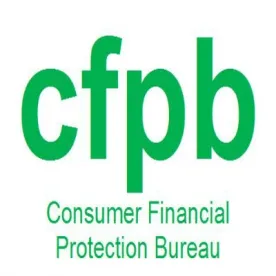For years, the mortgage industry has urged the CFPB to issue informal written guidance on the TILA/RESPA Integrated Disclosure (TRID) Rule, as well as other rules. The CFPB resisted, providing most guidance in the form of actual rules, webinars or oral statements. The industry believed that it would be a cold day in Hades if the CFPB ever issued guidance similar to the FAQs that the Department of Housing and Urban Development issued to provide guidance on the 2010 Good Faith Estimate rule. It may be more than a coincidence that the CFPB has issued the first four FAQs ever addressing TRID Rule issues on the heels of a severe cold wave.
Three of the four FAQs relate to corrected Closing Disclosures and the three-business-day waiting period before consummation, topics that have proven a source of much confusion for creditors. The first FAQ provides that, in the event that there is a change to the disclosed terms after a creditor provides the initial Closing Disclosure, the creditor is required to ensure that the consumer receives a corrected Closing Disclosure at least 3 business days before consummation if:
-
the change results in the APR becoming inaccurate;
-
if the loan product information required to be disclosed under the TRID Rule has become inaccurate; or
-
if a prepayment penalty has been added to the loan.
For other types of changes, the creditor can consummate the loan without waiting three business days after the consumer receives the corrected Closing Disclosure.
The FAQs also address how to handle a situation where an APR decreases (i.e., the previously disclosed APR is overstated). The FAQs state that if the overstated APR is accurate under Regulation Z (i.e., the difference between the disclosed APR and the actual APR for the loan is within an applicable tolerance in Regulation Z), the creditor must provide a corrected Closing Disclosure at or before consummation but a new three-business-day waiting period is not required. An inaccurate APR, on the other hand, will trigger a new three-business-day waiting period. The FAQ provides additional information related to APR accuracy, including a reference to the Federal Reserve’s Consumer Compliance Outlook. Please note that while the FAQs indicate that there is an APR overstatement tolerance that is tied to an overstated finance charge, various loan investors may not permit correspondent lenders to rely on the tolerance. It is advisable to check with your investor regarding their policy on this issue.
The CFPB’s FAQ clarifies that Section 109(a) of the Economic Growth, Regulatory Relief, and Consumer Protection Act (the “Act”) does not affect the requirement for providing a revised Closing Disclosure with another three-business-day waiting period in cases in which the APR in the prior Closing Disclosure becomes inaccurate based on a decrease in the APR. This section provides that if a creditor extends a second offer of credit to a consumer with an APR that is lower than the APR disclosed in the prior Closing Disclosure, the transaction may be consummated without regard to the 3-day waiting period with respect to the second offer. However, as previously reported, and as noted by the CFPB, Section 109(a) did not create an exception to the TRID rule waiting period because Section 109(a) amends TILA Section 129(b), which only applies to high-cost mortgage disclosures. The CFPB adds that TILA Section 128 sets forth a waiting period requirement other credit transactions and that such section was not amended by the Act. Clearly, Congress intended to modify the waiting period under the TRID rule, and simply made a technical error. The CFPB should act immediately to reflect the intent of Congress by proposing a rule to eliminate the need for a second three-business-day waiting period when the APR in the prior Closing Disclosure becomes inaccurate because of a new offer of credit with a lower APR.
The last of the CFPB’s FAQs states that a creditor’s use of a model form will provide a safe harbor even if the model form does not reflect the changes to the regulatory text and commentary that were finalized in 2017. An appropriate model form must be properly completed with accurate content in order to meet the safe harbor for TRID Rule compliance. In July 2016 the CFPB had proposed to amend the TRID rule to indicate that the industry could not rely on various sample forms included in Appendix H to Regulation Z but did not adopt the proposal based on significant opposition from the industry, as well as Fannie Mae and Freddie Mac.



 />i
/>i

